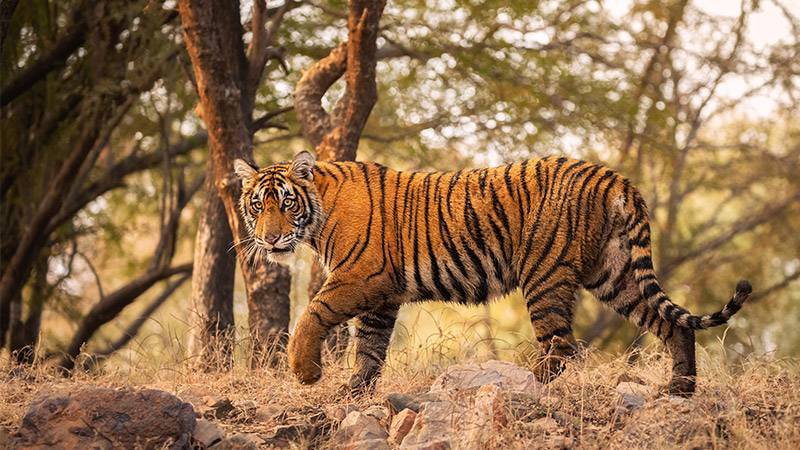New data released on Saturday, World Tiger Day, shows a significant rise in the wild tiger populations of India and Bhutan. This milestone marks a shift from the declining trend seen since the early 20th century.
India now boasts a tiger count of 3,682, making it home to 75% of the global wild tiger population. This is a 6% growth from previous counts, effectively doubling its tiger numbers in five decades. In comparison, the all-India tiger census of 1972 recorded a mere 1,827 tigers, a steep drop from the 40,000 estimated in the early 20th century.
Bhutan, a smaller South Asian kingdom, has seen its tiger population grow by 27% since 2015, now standing at 131. This increase results in an overall tiger density of 0.23 tigers per 100 square kilometers, according to a statement from the royal government of Bhutan.
Tigers, the world’s largest cats, predominantly inhabit Asia, spanning diverse environments from rainforests to mountainous terrains. Yet, their numbers dwindled from approximately 100,000 in the early 1900s to an alarming 4,500 today, primarily due to deforestation, habitat loss, and rampant poaching. Panthera, a global wild cat conservation organization, identifies China and Vietnam as the primary culprits, with high demand for tiger body parts in traditional medicine.
The conservation turnaround can be attributed to increased law enforcement, habitat improvement, and community-based tiger conservation initiatives, states the Worldwide Fund for Nature (WWF). Notably, Bhutan also set a world record for tiger sightings at the highest elevations, over 4,400 meters.
“It is of immense pride for our country to confirm an increase in the tiger population in our country,” Bhutan’s foreign minister, Tandi Dorji, said Saturday during an event releasing the National Tiger Survey Report, which covered more than 85% of the country.
This conservation success results from increased law enforcement, community-based tiger conservation programs, and habitat improvement, said the Worldwide Fund for Nature (WWF), which is known as the World Wildlife Fund in North America.
Union Minister of Environment, Forest, and Climate Change, Bhupender Yadav, lauded India’s dedication to conservation. “India’s exemplary efforts in tiger conservation…is a testament to the determination and commitment of the nation,” he remarked. India’s tigers primarily inhabit 53 reserves that span over 75,796 square kilometers or 2.3% of the country’s total land area. Despite the success, around 35% of these reserves need enhanced protection, habitat restoration, and other measures, the ministry’s statement read.
The success story extends to neighboring Nepal, where the wild tiger population nearly tripled since 2010, reaching 355 based on last year’s census.
However, this rise isn’t devoid of challenges. According to Radio Free Asia, increasing human-tiger interactions resulted in more than 100 fatalities in India between 2019 and 2021. Nepal’s Prime Minister, Pushpa Kamal Dahal, expressed concern, emphasizing the importance of habitat conservation and ensuring prey availability for the growing tiger population.
Tigers, classified as endangered and protected, are still targeted in the illegal wildlife trade, which is valued globally at U.S.$20 billion.
Nepal, Bhutan, and India, alongside ten other tiger range countries, took a pledge in 2010 to double the global tiger population by 2022. With current conservation efforts yielding results, there’s hope, but the path ahead requires continued dedication to habitat conservation and reducing human-animal conflict.
More inspiring green news similar to this:


